Wamberal, Narrabeen: Builder Keith Muller’s simple, long term solution to coastal erosion
As homes at Wamberal are teetering on the edge due to huge waves, an old builder from the Southern Highlands may have just come up with a low cost, permanent solution to beachfront erosion. And you won’t believe how simple it sounds.
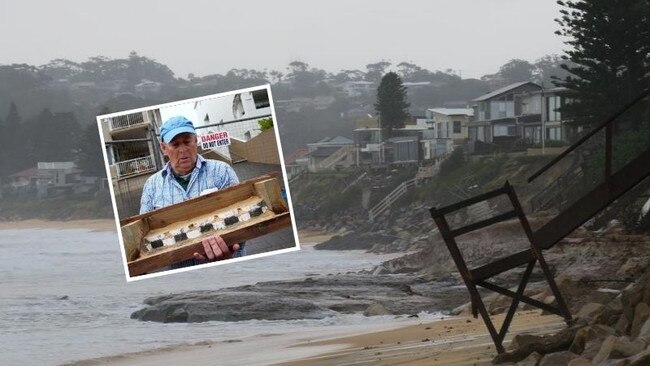
Central Coast
Don't miss out on the headlines from Central Coast. Followed categories will be added to My News.
Recent storms and heavy seas have caused widespread erosion along the NSW coast but an old builder from the Southern Highlands has a “common sense” solution that could just work.
Keith Muller may not have engineering degrees but the 70-year-old has never been out of work a day in his life.
Now the builder-turned-earthworks operator has come up with a long term fix for erosion at Wamberal, The Entrance North, Narrabeen, Stockton and anywhere else under threat from heavy seas.
“I thought of it overnight once I saw it on the news,” he said.
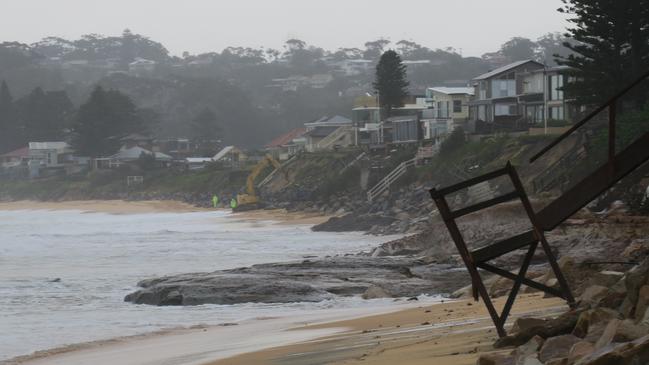
Mr Muller made a small model to explain the concept and drove up to Wamberal on Monday to share it with residents and Central Coast Council.
It involved burying a line of large 6m-diametre stormwater pipes vertically in the sand down to sea level, which he said would be about 3m or so.
He said the pipes would stand about 1.5m tall and be backfilled with sand.
Another row of 1.5m-tall pipes would be interlocked on top of the first row but terraced back and again filled with sand.
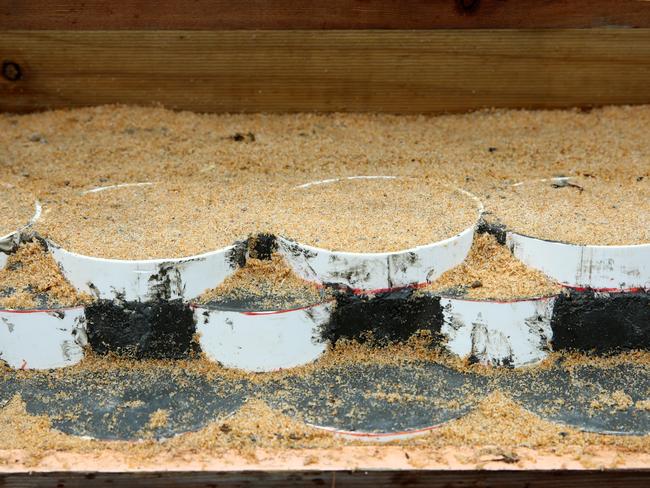
He said this process could be repeated — using shorter stormwater pipes if necessary — until the wall reached the back of resident’s boundaries.
Mr Muller said once the waves hit the wall of “rings” the dry sand inside would get wet and heavy but would not be washed back out to sea because it was contained in the concrete stormwater pipes.
“The sand can’t drain out the bottom because that’s at sea level and it can’t go back the other way because it’s got Australia behind it,” he said.
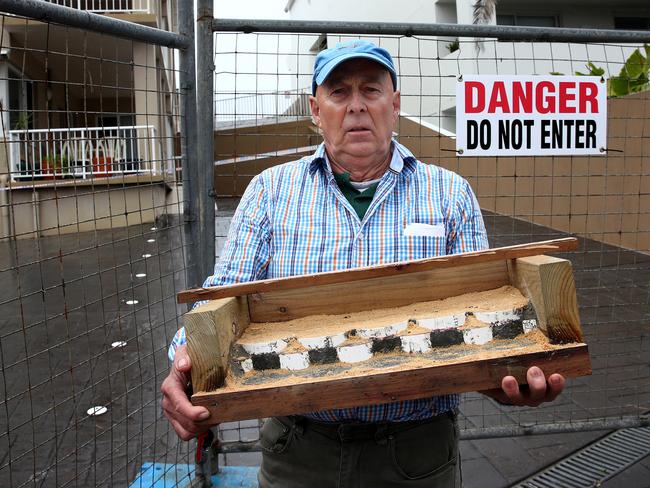
Mr Muller, who now mainly operates 50-tonne bulldozers, said once the sand-filled pipes became wet they would be impossible to budge and could withstand enormous seas.
“If you have a 6m-diametre concrete stormwater pipe filled with sand no machine on Earth could pull it out,” he said.
Mr Muller said once interlocked pipes were installed residents could replant over the top of the terraces.
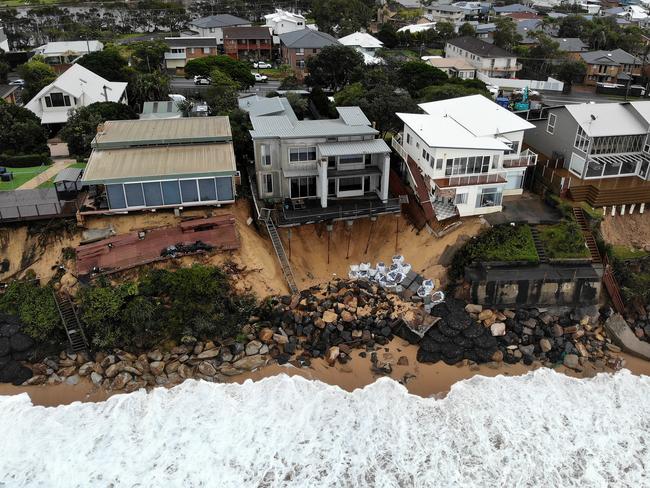
Replanting dunes has long been the preferred method of coastal protection for many councils but the problem comes when large waves undercut the dune and the vegetation falls into the sea.
Mr Muller said this would not happen with his design because the sand in the pipes “would not move” and be further anchored by the vegetations’ root system.
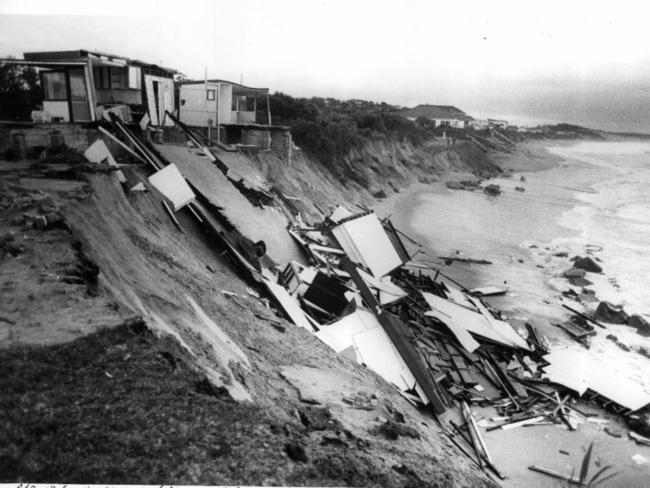
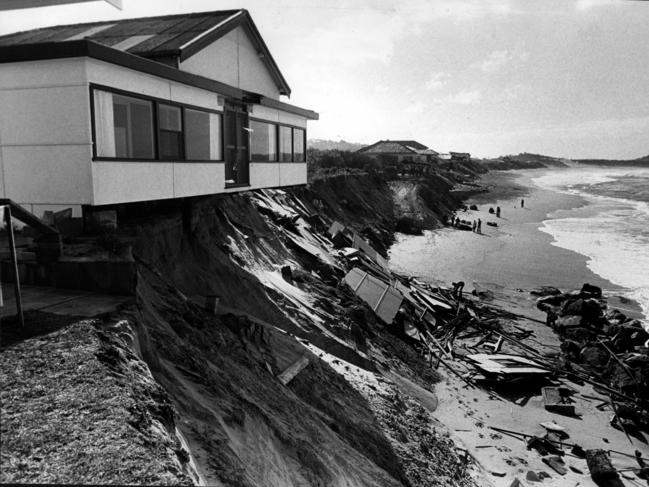
Central Coast Council spent the weekend craning in two-tonne bags of rocks and hundreds of tonnes of large stones as part of emergency works to save homes at Wamberal and The Entrance North.
More four-tonne rock bags are on their way from Japan.
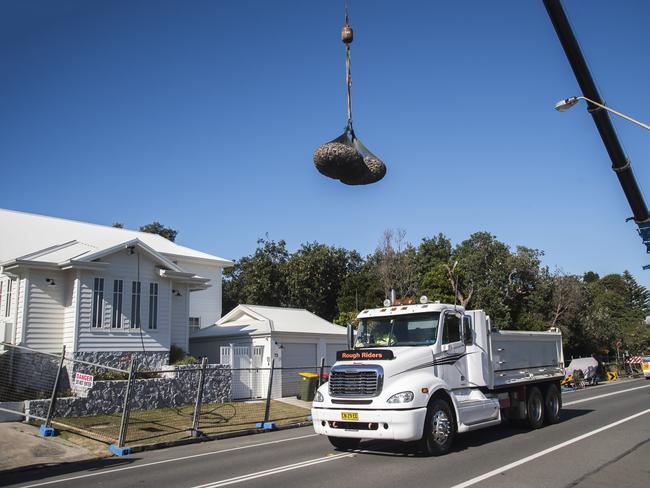
Mr Muller said the long-term problem with those emergency works was the sand could still be swept away through gaps in the rocks — something he said could not occur with his design.
While Mr Muller was still costing his designs, he said it would be “far cheaper and quicker” than any other alternative.
Coastal engineer of more than 50 years experience Angus Gordon said the problem with Mr Muller’s concept was the “vertical” parts of the wall would “reflect” wave energy which could cause further erosion.
Instead he said a rock revetment wall — a collection of large and smaller rocks arranged at a specific slope — “absorbs the energy” and prevents erosion.
Meanwhile Central Coast Council has engaged Manly Hydraulics Laboratory to prepare concept plans for a permanent protection structure at Wamberal.
This is half funded by council and the NSW Government through the Coast and Estuary Grants Program at a total cost of about $405,000 just for the design alone.

